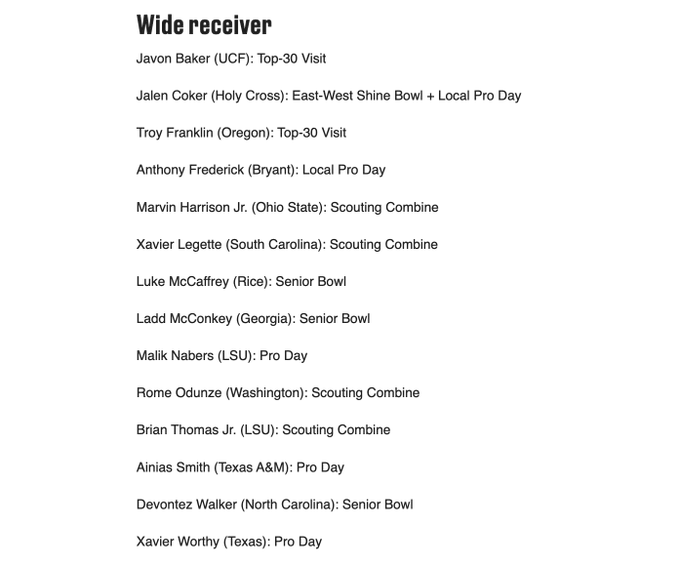6. Ricky Pearsall, Fla., 6'1", 190. Grade 89.9 Borderline Franchise tier, immediate starter with room to grow as he plays.
Comp. Chris Olave
Pearsall is explosive with big-play ability as a ballcarrier and vertical receiver. He has a dynamic catch radius and toughness at the catch point. He’s the type of option
a veteran quarterback can throw open on a variety of routes over the middle and also lean on up the boundary. Like Chris Olave, Pearsall may not look like the
prototype primary weapon, but his overall skills make him a capable weapon who can deliver as a primary or 1-B for an NFL offense. His breaks are especially impressive.
At the catch point, Pearsall has all of the techniques needed to catch the ball and he has a flair for the spectacular. CBs will underestimate his athleticism and well developed
technique of route running when they face him the first time or two. He gain respect quickly. Pearsall releases well from the LOS with no wasted motion. He sinks low to work
off the LOS at full throttle. He has a full tool box of foot techniques and his hands are quick and violent. His counters against man/man press are impressive. He has good
acceleration into his stem to stack defender and uses head fakes to further shake them. He’s consistently good at selling stems and moving defenders at the top of his stems.
His breaks are well rehearsed, instinctive and sudden. He consistently gains separation, at least plenty for an avg NFL QB. He has good boundary awareness, tracks balls well
and catches with proper overhand technique away from his defender. He can one hand balls very well. Pearsall made some spectacular catches while I watched him of balls
that looked like they were uncatchable. He catches balls with a good radius but the one thing I'd like to correct is his hands position on back shoulder catches. Too often his
tendency is to catch the ball with underhand technique rather than to reach out for the ball away from his body with the overhand technique. After the catch, he transitions
well to a runner with vision to set up blocks and stop-start, jump cuts to avoid tacklers. He will use a stiff arm regularly and lower his shoulder when he can. His blocking
could be better, he gets impatient and throws himself at his target instead of being more patient to square up to drive. His QB in '23 could have been better throwing him open.
No injuries noted.










